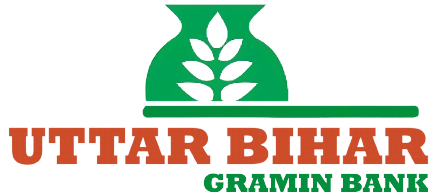Table of Contents
If you’re a dairy farmer—or ready to become one—and want a clean, affordable way to build a small but dependable dairy unit, the Uttar Bihar Gramin Bank (UBGB) Integrated Dairy Development Scheme is built for you. It focuses on simple, income-generating setups of 2, 5, or 10 milch cattle, with practical rules that help you start small, learn fast, and scale steadily. Here’s your plain-English guide to how it works, what you’ll need, and smart ways to use it so the loan pays for itself.
What this loan is for (Purpose)
The scheme supports self-employment and income stability through small dairy projects. Funds can be used to purchase crossbreed milch cows (each capable of at least 10 liters/day under proper care), along with essential setup expenses that get milk flowing quickly and reliably. The aim is simple: help you generate daily cash flow, improve household income, and create an asset you can grow over time.
Who can apply (Eligibility)
- Farmers, SHGs, and individuals who are permanent residents within UBGB’s service area
- Applicants must have no loan default history with any bank or financial institution
- SHGs should follow standard credit discipline; individuals should be comfortable managing cattle health and daily routines
If you’re committed to good animal care and basic record-keeping, you meet the spirit of the scheme.
What you can get (Loan Amount, Margin, Subsidy)
- Loan amount: For a 2-cow unit, up to ₹1,00,000 (higher units financed as per bank circulars).
- Margin: Minimum 10%—you bring at least a tenth of the project cost; the bank finances the rest.
- Subsidy: Up to 50% of the project cost (as per scheme rules). This is a major boost to viability—confirm the exact subsidy process and eligibility at your branch so you don’t miss timelines or paperwork.
Tip: With subsidy support and a modest margin, your out-of-pocket can stay low, helping the unit break even faster.
Security and insurance (Collateral & Risk Cover)
- Collateral:
- No collateral required up to ₹1,00,000
- Above ₹1,00,000: collateral as per the bank’s circular/policy
- Insurance: Cattle insurance is mandatory. It protects your cash flow from shocks due to illness, accident, or mortality. Ask the branch what perils are covered, the claim process, and how premiums are handled.
Why this matters: In dairy, a single health event can disrupt income. Insurance and basic bio-security keep your repayment plan safe.
Tenure, lock-in, and interest (Repayment Terms)
- Repayment period: Up to 5 years (EMIs)
- Lock-in period: Minimum 3 years
- Interest rate: 12.50% p.a. (payable half-yearly, subject to change)
You repay in equated monthly installments (EMIs), while the scheme notes interest is accounted half-yearly as per bank practice. Your sanction letter will show the exact EMI and due dates. If you plan to expand, prepaying when milk sales peak (festivals, winter demand) can shave off interest quickly.
How the money is released (Disbursement & Purchase)
- Purchase channel: Cattle must be bought at identified Hat/Fair events and vetted by a Purchase Committee.
- Payment flow: The bank pays the supplier/seller directly, ensuring transparent pricing and quality.
Why fairs? It protects you from overpricing, helps verify breed and lactation stage, and gives you access to multiple sellers in one place.
Buying the second animal (Staggered expansion)
The scheme allows you to add a second cow 4–6 months after the first. This is smart for two reasons:
- You learn the routine (feed, hygiene, milking, vet visits) with one animal before doubling workload.
- Milk yield and income stagger, reducing the risk of both animals drying up at the same time and smoothing cash flow for EMIs.
What “a good unit” looks like (Loan Components & Daily Practice)
- Crossbreed cows with ≥10 liters/day potential under proper feeding and care
- Balanced ration and clean water—milk is 85–90% water; hydration shows up directly in the pail
- Clean shed, proper drainage, fly control, and twice-daily milking routine
- Regular vet care: deworming, vaccination, mineral mixtures, mastitis checks
Consistent care = consistent liters = predictable EMIs.
Practical cash-flow planning (without guesswork)
Every village and cooperative pays differently. Before you sign:
- Confirm your buyer (co-op, chilling center, local vendor) and per-liter rate for both morning and evening milk
- Estimate monthly feed costs, vet visits, and utilities
- Build a buffer for dry periods or seasonal dips in yield
- Check EMI affordability against conservative milk income (don’t rely on best-case yield)
If your math works on a cautious estimate, you’re set up for success.
Documents & KYC (What to carry)
- KYC: PAN (or Form 60/61), photo ID, address proof, recent photographs
- Residence proof: Showing you are within the bank’s service area
- SHG papers (if applicable): Resolution/meeting notes, group KYC
- Bank may ask for a simple project estimate (2/5/10-cow unit) and local vet contact
Neat papers = faster sanction and smoother disbursal at the fair.
How to apply (Step-by-step)
- Meet the branch: Confirm current interest rate, subsidy window, timelines, and whether you’re applying as individual or SHG.
- Choose unit size: Start with 2 cows unless you already manage livestock; scaling is easier than downsizing.
- Prep your shed & fodder: Have space, feed, and water ready—yield responds to comfort from day one.
- Attend the designated fair: Select animals with the Purchase Committee; check teeth/age, udder health, and current lactation.
- Bank pays seller: You get the animals and the schedule for EMIs; ensure insurance is active.
- Track yield & costs: Keep a simple daily log of liters, feed, and receipts; it helps with renewals and future top-ups.
Smart tips to reduce risk and cost
- Buy in milk (lactating cows) to start cash flow quickly; confirm expected yield with the committee.
- Split calving cycles if you plan multiple animals—staggering keeps income steady year-round.
- Grow part of your fodder (if land allows): green fodder + dry fodder + concentrates = lower cost per liter.
- Use the subsidy well: Direct it to shed improvements or a small chaff cutter—both lift yield and reduce wastage.
- Call the vet early: Don’t wait on mastitis or fever; early treatment protects both yield and loan repayment.
Quick answers (straight to the point)
Is collateral required?
Not up to ₹1,00,000. Above that, collateral may apply per bank circular.
What’s the interest rate?
Currently 12.50% p.a., payable half-yearly (subject to change). Your EMI schedule is monthly.
How long to repay?
5 years (EMI), with a 3-year lock-in.
Can SHGs apply?
Yes—subject to standard SHG norms and within the service area.
Who receives the money?
The seller, directly from the bank, after selection at the approved fair.
Is insurance compulsory?
Yes—cattle insurance is mandatory.
Bottom line: UBGB’s Dairy Loan takes the guesswork out of starting or growing a small dairy unit: low margin (10%), possible 50% subsidy, no collateral up to ₹1 lakh, mandatory insurance, transparent fair-based purchase, and a 5-year EMI path you can plan around. Start with two well-chosen cows, nail the routine, and scale with confidence—one lactation at a time.

Kritti Kumari is a banker and MBA graduate who writes about banking, finance, and customer-friendly services. She simplifies complex financial products into easy guides, helping readers understand Bihar Gramin Bank’s offerings and make smarter money decisions.

